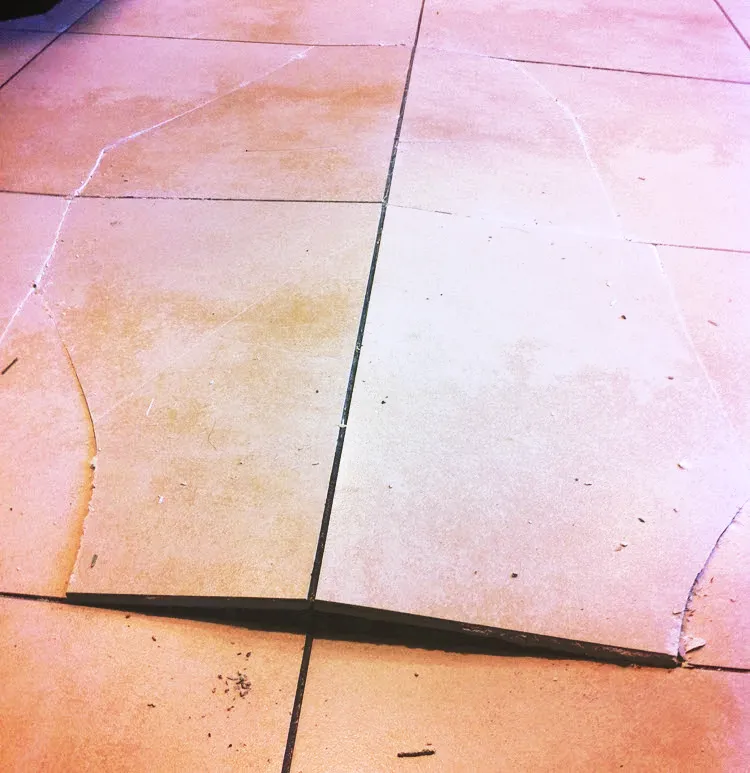How to Deal with Non-Linear Expansion Joints
April 1st, 2025
Our friend Scott Carothers at Floor Trends & Installation wrote this important article How to Deal with Non-Linear Expansion Joints

How do you deal with expansion joints in an installation that is non-linear? You can't ignore them or you'll wind up with a nasty surprise. You can't necessarily change your tile layout so your movement joint is linear. So what can you do?
Luckily, there's an ANSI standard available to help you address this situation.
3 Reasons Why Expansion Joints Matter
In case you do think you can ignore movement or expansion joints, here's a refresher on why they matter.
1. Buildings Experience Movement
Buildings experience significant movement on a day to day basis and a successful ceramic, porcelain, and/or glass tile installation must accommodate this movement.
Although you'll find many causes for movement in a structure, temperature and moisture changes play a large role.
2. Temperature Affects Buildings and Tile
As beautiful and functional as ceramic and porcelain tiles are, they are very greedy when it comes to the space needed around them to absorb any movement.
In fact, when a surface such as a tile floor becomes warm or hot to the touch from direct sunlight or in-floor heating, it expands, growing larger. When the sun disappears and/or the heat cycles off, the floor cools and contracts, growing smaller.
The movement is much like the action of the musical instrument, the accordion. The in and out motion is similar to that of a floor that can expand and contract many times per day.
3. Movement Joints Prevent Tile Tenting
Allowing little or no room for the tile assembly to expand can cause the tile to pop up or “tent” in the middle of the floor. This situation occurs in both commercial as well as residential jobs, so none of them are exempt from this requirement.
This resulting expansion and contraction must be accommodated or the tile assembly may rebel by shearing away from the substrate and moving upward in what is known as “tenting”.
The image above was from a large tiled area between the elevator cars and the sixteen-foot floor-to-ceiling windows with Southern exposure. There were no expansion joints in the field tile and no perimeter joints along the elevator wall or the window wall.
The hot sun plus a large tiled area with no allowance for movement led to a tented disaster.
Tile Industry Guidelines for Movement Expansion Joints
Luckily, you have guidelines for movement expansion joints in the American National Standards Institute (ANSI) publication:
The ANSI A108.01 document provides the following standards:
Section 3.7.3.1 – Interior areas exposed to direct sunlight shall have expansion joints spaced at 8 ft. – 12 ft. (2.4 M – 3.5 M). These joints are necessary in both north/south and east/west directions.
Section 3.7.4.1 – Unless otherwise specified, use sealants complying with ASTM C920, which designates sealants according to types, grade, class, and uses. Back-up strip shall be a flexible and compressible polyurethane and, rounded at surface to contact sealant and as recommended by sealant manufacturers. It must fit neatly into the joint without compacting and to such a height to allow a sealant of 1/2 the width of the joint. Sealant must not bond to the back-up material.
The ANSI A108.02 states:
Section 4.4.2 – Movement joints area are a requirement for tilework.
This expansive growth must be accommodated with shock absorber-like areas known as expansion or movement accommodation joints. Since grout joints do not offer any movement-absorbing qualities, these joints must be filled with a resilient material such as 100% silicone, urethane, of polysulfide. The Tile Council of North America (TCNA) Handbook, in section EJ171, clearly shows the shape, size, and location of these shock absorbers.






